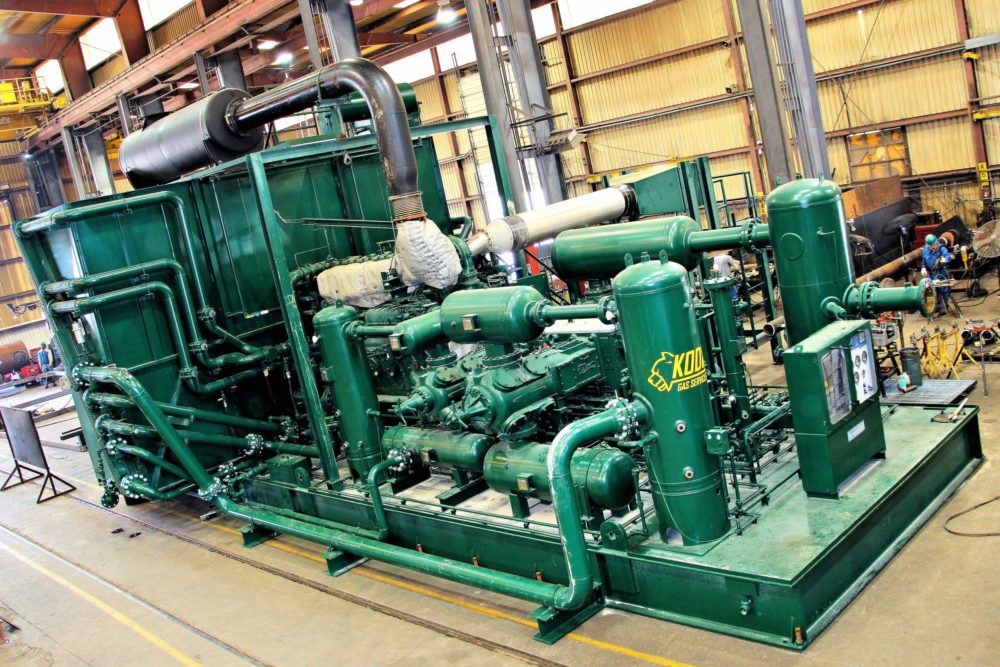Gas Compression packages are used for gathering and transporting natural gas from production areas downstream where it can be further processed and refined. Spitzer Industries has over twenty years’ experience packaging reciprocating compression for the oil and gas industry. Our packages are driven by either gas-fueled reciprocating engines or variable speed electric motors, whichever is better suited to your facility needs. Spitzer Industries provides fully integrated modular compressor to facilitate ease of reassembly upon delivery.
Main Features of Spitzer Gas Compression Packages
- Spitzer Industries manufactures reciprocating gas and electric motor driven units from 90 hp to over 5,000 hp.
- Spitzer Industries offers a standard line of products using Caterpillar, Waukesha, and Ariel OEM components from 200 hp to 2500 hp.
- Spitzer Industries allows you to purchase a fully customized unit, a standard package, or work with our engineers to modify our standard into your standard.
- Spitzer Industries has over 20 years of Gas Compression unit design and fabrication experience packaging over 2,500,000 HP of reciprocating gas compression packages.
- All Spitzer packages meet or exceed all relevant industry standards, including vibration and pulsation control in the compressor, vessels, piping, cooler, scrubbers, and exhaust system.

